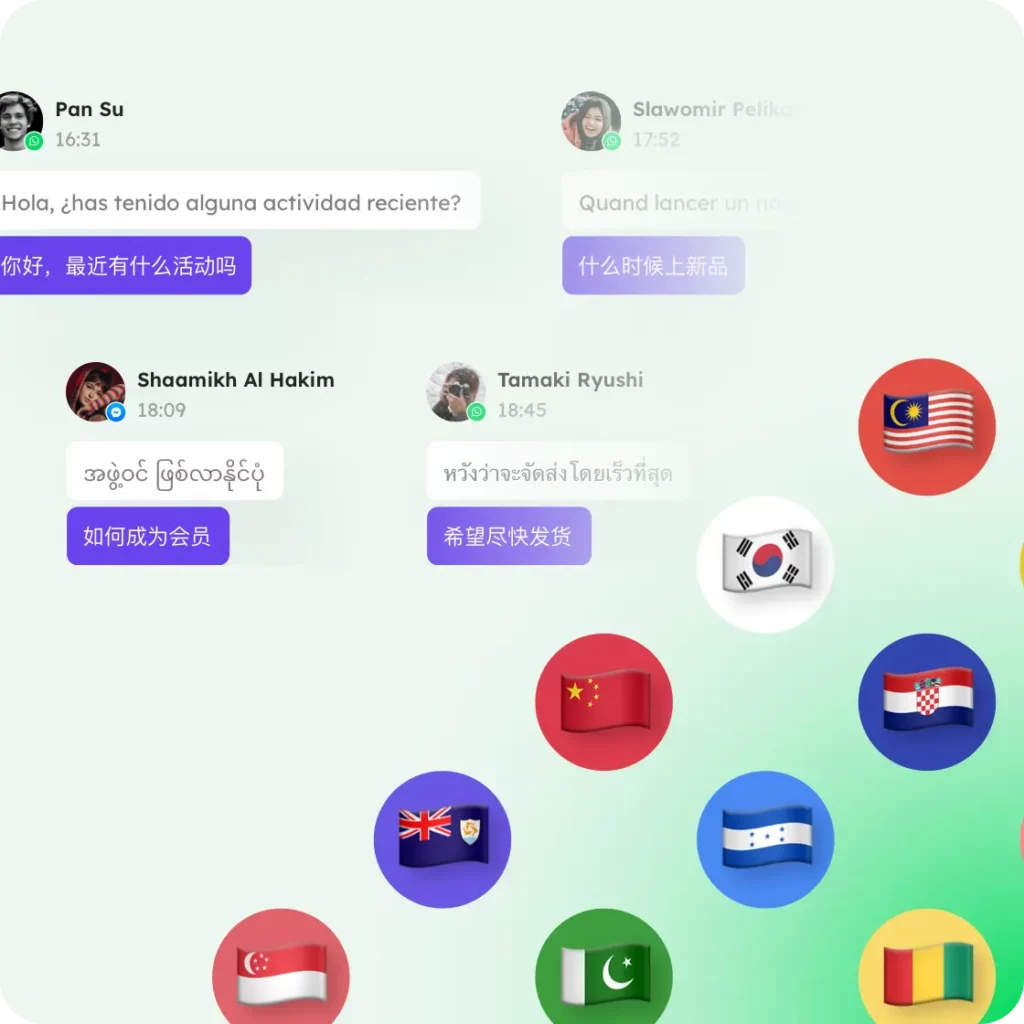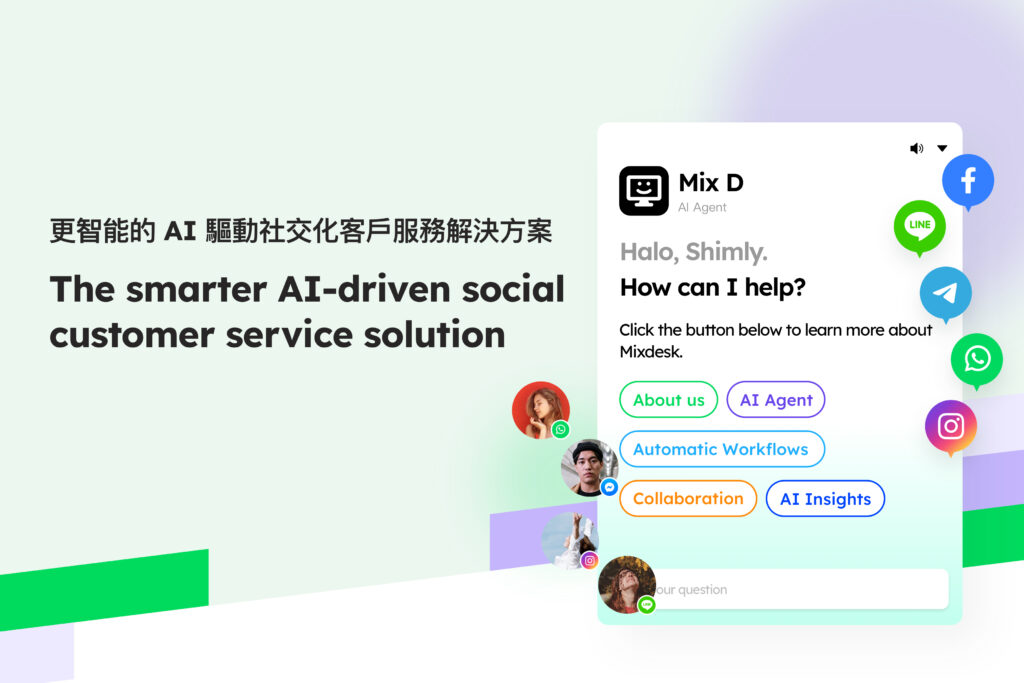Author of this article:Fiona
WithCross-borderBusiness, global content andMultilingualThe demand for services is growing rapidly, and companies are interested in high-quality, real-time, and scalabletranslationThe demand for capabilities is getting stronger and stronger. Compared with traditional translation services,Translation open platform It provides a more flexible, automated, and cost-effective solution.
However, there are many open translation platforms on the market, and each platform has significant differences in language coverage, price, latency, quality, and compliance. As a company that wants to embed translation capabilities into products, customer service systems, and cross-border e-commerce, you must understand the advantages and disadvantages of these platforms in order to make the right choice in actual business scenarios.
Starting from the five mainstream translation open platforms, this article will compare their core capabilities and applicable scenarios, analyze selection strategies, landing suggestions, and pay attention to pitfalls, and introduce how to use Mixdesk And other tools to deeply integrate the translation platform with the customer service system to achieve a true closed loop of multilingual operations.
- 1. What is the open platform for translation? Why use it?
- 2. Comparison of the 5 mainstream translation open platforms
- 3. How to choose the right translation platform for your business?
- 4. Multilingual translation integration: from ”translation" to “global service”
- V. Applicable industries and typical application scenarios
- 6. Common misunderstandings and risks and their avoidance
- 7. Summary: Advanced path for the selection and operation of the translation open platform in 2025
1. What is the open platform for translation? Why use it?
In the traditional model, there are usually two paths for enterprises to achieve multi-language support:
- Human translation: Hand over all copywriting, customer service replies, website content, etc. to the translation team or outsourcing vendor;
- Embedded machine translation + post-proofreading: Use some built-in translation tools to automatically translate for users, and then manually correct them.
and Translation open platform It is a service model that connects machine translation capabilities to developers or enterprises through APIs. Enterprises do not need to build their own machine translation model, they can directly call the translation engine of the platform and embed it into websites, apps, customer service systems, content management systems, etc. To achieve real-time, dynamic, and multilingual content generation or translation.
The core advantages of using the translation open platform include:
- Real-time and scale: Able to quickly process large-scale content, suitable for multilingual scenarios such as e-commerce, content platforms, and customer service systems.
- Controllable cost: Billing on request or monthly subscription package, which has a more cost advantage than manual translation.
- Continuous iteration: The platform continuously optimizes its model and language performance, and users can obtain continuously upgraded translation quality.
- Flexible access: Provide REST API, SDK, and multi-language support to facilitate docking with existing systems.
But at the same time, you also need to face Translation quality, delay, privacy and security, adaptation of industry terms and other challenges.
2. Comparison of the 5 mainstream translation open platforms
The following lists the top 5 well-known translation open platforms in the industry, comparing their characteristics, advantages, disadvantages and applicable scenarios.
| platform | Features / Good at language | advantage | Disadvantages / limitations | Typical application scenarios |
| Google Cloud Translation API | Support 100+ languages | It has wide language coverage, strong stability, low latency, and good integration with Google ecosystems (such as GCP, YouTube, and GTM). | Professional terminology calibration requires labor and may be more expensive than the local platform | High-concurrency scenarios, such as multilingual translation of product descriptions by cross-border e-commerce platforms, batch translation of user reviews by media platforms, and real-time translation of user questions by travel platforms |
| Microsoft Translator Text API | Support mainstream languages and Microsoft ecological integration | Good linkage with Azure services, fast translation speed, support for custom terminology, and high cost performance | It may behave generally in niche languages; for very short sentences or colloquial expressions, sometimes the semantics are poorly understood. | Enterprise-level product translation, Office system content integration, and enterprises that want the overall technology stack to be deployed on Azure |
| DeepL API | Excellent European language family (German, French, Japanese, etc.) | The translation quality is rated as the forefront of the industry by many users; the translation output is natural and smooth, and he is good at literary/market copywriting style texts. | The supported languages are relatively limited, and there is insufficient support for some Asian languages; when making large-scale and highly concurrent calls, price or performance disadvantages may appear. | Literary/marketing copywriting translation, brand marketing copywriting, advertising writing, long document translation, multilingual version of the official website text |
| Amazon Translate | Built-in AWS ecosystem | Integration with AWS services, easy to expand; support synchronous and asynchronous translation, adapt to different scenarios; stable performance, low bandwidth delay | In some language pairs (such as some Southeast Asian languages), the effect is limited; for texts with complex semantics or chaotic sentence structure, the output may be biased. | Cloud service users, cross-border e-commerce and cloud architecture are combined; e-commerce background, system messages, commodity meta-information, etc. are deployed in multiple languages around the world |
| Tencent Translation / Tencent Cloud Translation | Strong Chinese and good support for Asian languages | Strong localization advantages, low cost, friendly to the Chinese market, support for customized terminology | The international brand awareness is slightly weaker, and the extreme language quality is slightly weaker | China dominates the market or exports business to the Chinese market, Chinese e-commerce, expansion of native Chinese business, cross-border business in the East Asian market |
3. How to choose the right translation platform for your business?
After understanding the differences between these platforms, the next step is to determine which one or more is best for your business. The following is the selection suggestion and judgment process:

- Clarify business scenarios and priority dimensions
List the items you value most:
- Translation quality / localization
- Language coverage
- Performance / latency
- cost
- Terminology customization ability
- Compliance / privacy requirements
- Extensibility / API access capability
- Conduct small-scale comparative tests
Select a few typical texts (product details, user reviews, customer service questions and answers) and translate them on several platforms to experience the output quality and error rate.
Record indicators such as delay, cost, and ease of use.
- Consider a hybrid strategy
In many business scenarios, it is impossible for a single platform to cover all scenarios. You can use it in combination:
- use DeepL Responsible for European and Japanese copywriting translation
- use Google Translate Covering small languages
- use Tencent Cloud As a backup for the Chinese and East Asian markets
- When calling the translation platform in the business, combine the term base with the post-correction process
- Integration with business systems
The following factors should be considered when choosing a model:
- Does the platform provide SDK / REST API?
- Can it be connected to your CMS, ERP, and customer service system?
- Whether to support asynchronous translation / batch translation
- Whether to support termbases and contextual memory
4. Multilingual translation integration: from ”translation" to “global service”
In cross-border business, a simple translation platform can often only act as a “language tool”, which solves the problem of text translation, but cannot truly participate in customer operations. Companies still need to switch between multiple customer service systems to handle inquiries, label, and send marketing messages. The process is fragmented and inefficient. In contrast,Mixdesk Provides an AI-driven comprehensive solution.Mixdesk It not only provides language translation in isolation, but is deeply integrated with the customer service workflow.
in Mixdesk With the support of, the enterprise can achieve:

- Automatically translate customer service messages: When the customer uses the consultation sent by the customer, the system can automatically detect the customer's IP and send a welcome message in the corresponding language. Even if the customer sends a voice, AI customer service can recognize and reply. At the same time, the system supports dialogue in hundreds of languages around the world, allowing both parties to easily achieve barrier-free communication.
- Label + language management: Through intelligent identification of user languages and regions, the system can automatically label customers such as “English users” and “Arabic users” according to the configuration, so as to facilitate the follow-up hierarchical operation and targeted marketing of customer service.
- Localized vocabulary and cultural adaptation: An excellent customer service system can access the company's own cultural knowledge base, allowing AI to adjust the tone and vocabulary of communication according to the social habits, etiquette and cultural sensitivities of the customer's country.
- Compliance and Privacy protection:Compliance is the bottom line that companies must pay attention to when expanding overseas markets.Mixdesk Desensitize sensitive data such as personal information and payment details to ensure that data transmission and storage comply with international privacy regulations such as the GDPR and CCPA.
This integrated model of ”translation + customer service“ allows companies to truly ”reach customers in which language the advertisement uses, and complete the whole process of service in that language." Whether it is advertising, customer service consultation or after-sales support, all links can be seamlessly connected to a unified language environment, to achieve a closed loop of cross-language and cross-cultural customer operations, and to win a higher sense of customer satisfaction and trust for the brand in the global market.
V. Applicable industries and typical application scenarios
In the following scenarios, if traditional human translation or offline translation is used, it will be inefficient and difficult to iterate quickly; the integration of open translation platform + customer service system can open up the overall process and improve the user experience and operational efficiency.
| industry | Demand capacity |
| Cross-border e-commerce(Such as independent station e-commerce, FB /WA multi-account chat orders, etc.) | Product title / description / comment / customer service dialogue Multilingual translation international market site localization adopts independent IP and simulated web login technology to reduce the risk of title |
| SaaS / SaaS Overseas products | Software interface / message prompt multi-language version, user feedback / community post translation, multi-language customer service support, automated Workflow |
| Games/ applications go to sea | Multi-language translation supports player community /private chat customer service, multi-language docking, automatic response to frequently asked questions, 24/7 AI customer service online |
6. Common misunderstandings and risks and their avoidance
In the process of practicing an open translation platform, many companies often believe that “with translation tools, they can operate the global market smoothly”, but there are still many invisible risks and misunderstandings in practical applications. If these issues are ignored, it will not only affect the customer experience, but may also cause a crisis of brand trust, increase operating costs, and even touch the red line of compliance. The following are the common pitfalls and risks when companies introduce open translation platforms, as well as corresponding optimization suggestions:
| Misunderstanding / Risk | Possible consequences | Avoidance strategy |
| Single platform ”Omnipotence" | Poor quality in some languages, affecting the customer experience | Use multi-platform combination + term correction mechanism |
| Excessive dependence on automatic translation, no manual review | Serious translation errors, omissions, and grammatical errors occurred | Manual review of important content or high-value customer content |
| Ignoring privacy and data security | Risk of leakage of sensitive information | Desensitization of sensitive fields; encrypted transmission; compliance review; use compliancetools |
| Ignoring cultural differences and etiquette | Cause discomfort or misunderstanding in the target market | Link to the local cultural knowledge base through tools to avoid mistakes; test cultural expression |
| The cost of high-frequency calls is too high | Higher costs affect profits | Set the call threshold; cache commonly used translation results; call on demand; selectCost-effective tool |
7. Summary: Advanced path for the selection and operation of the translation open platform in 2025
The selection of the translation open platform is not "choose the best”, but "choose the most correct". Enterprises need to move from “single tool procurement” to “full-link efficiency management”, and follow the following four steps to achieve advanced:
- Scene diagnosis layer: Clarify core requirements, budget scope, and compliance requirements, and use the ”demand Priority Matrix" to filter 3 candidate platforms;
- Measured verification layer: Test the candidate platform with real business data, focusing on the accuracy rate and format retention rate of the target language;
- Tool collaboration layer: Through the advanced large language model based on Mixdesk Intelligent customer service system, one-click realization of multilingual translation and aggregation platform, to help enterprises continue to grow.
In this multilingual era, who can achieve it faster, better, and more efficiently?languageWith a breakthrough in boundaries, whoever can win the lead in the global market. With the help ofMixdesk, You can not only gain efficient translation capabilities, but also realize a closed loop of multilingual reception, labeling management and operation in the customer service system. Advertising drainage, user consultation、contentDistribution, the entire process can be seamlessly connected across languages, truly allowing enterprises to establish a language communication advantage in the global competition.
Mixdesk
AI Agent

